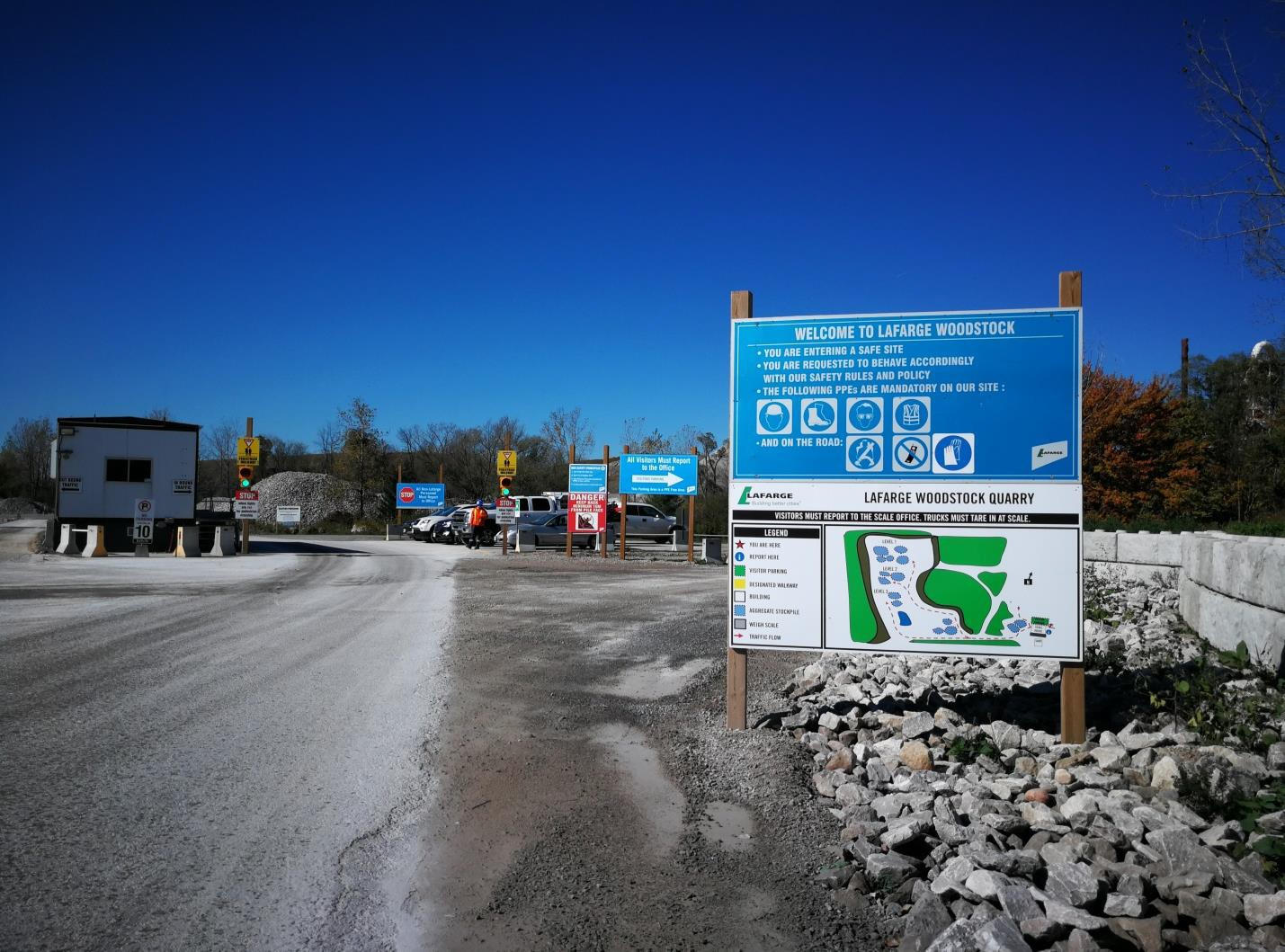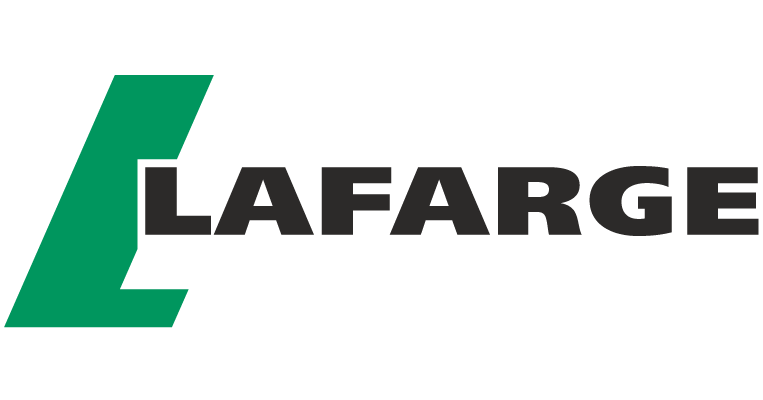Sustainability at Woodstock
Air Emissions Management
Dust is the most common air emission at aggregate mining operations. We suppress dust emissions from roads, crushers and conveyor belt systems through the application of water and approved MOECP dust suppressants to roads. Lafarge undertakes an Industrial Hygiene Program which shows no health risks from particulate matter (PM2.5 and PM10) from our operations on site. At Lafarge Woodstock, we have implemented a Fugitive Dust Best Management Plan that includes proactive dust mitigation as well as fugitive dust management. We will continue to implement proactive dust control and suppression during our operations. This includes ensuring we are minimizing the area of disturbance and increasing our progressive rehabilitation (or keeping local farmers on inactive areas).
Visual Screening
Similar to the existing active extraction area, acoustic and visual berms will be used to screen the operation and will be built in stages to screen public views. In locations adjacent to our neighbouring residents, the berm will be graded to create diversity and gentler slopes, including planting of trees and shrubs.
Traffic
The existing entrance/exit onto 35th Line will continue to be used. We will continue to utilize proactive dust mitigation techniques. Our annual tonnage limit of 4 million tonnes per year is not proposed to change. The Site Plan Amendment application will not result in any change to the amount of traffic or direction.
Noise
As part of the Site Plan Application, a noise assessment has been completed. All relevant Ministry of the Environment, Conservation and Parks(MOECP) guidelines are satisfied at our closest receptors. The operation has perimeter berming to attenuate noise. There will also be operational restrictions on time and amount of equipment being used at the quarry to ensure Ministry noise guidelines are satisfied.

Blasting
A blasting impact study has been completed for the site plan amendment. Lafarge Woodstock uses the best available technology to conduct blasts and continually makes improvements where possible. All blasts are and will be continued to be monitored to ensure compliance with MOECP blasting requirements. Lafarge tries to blast at consistent times during the day in order to establish a consistency in blasting patterns and frequency for the neighbours. We have been blasting at the Woodstock Quarry for more than 60 years and have a good understanding of how to blast safely and efficiently at this location. Each blast is reviewed and modified as needed when getting closer to receptors. The Site Plan Amendment application will not increase the frequency of blasting at the Woodstock Quarry. If you wish to be notified when a blast is scheduled to occur, please feel free to contact us to be added to the notification list.
Water Quality and Quantity
At Lafarge Woodstock, we do not chemically process our products. To minimize water use, we have installed closed circuit water use systems to reuse and recycle the water that we need to operate. We have a monitoring program in place to monitor the groundwater table as the operation proceeds, and report all water use under our permitted sources to the Ministry of the Environment, Conservation and Parks. If you have a question about your well and our operation, please contact us. Lafarge will maintain its existing commitment that all residential and agricultural water supplies will be protected. If there are any unforeseen impacts from the quarry operation, water supply will be restored at Lafarge’s expense. If any of the neighbours would like to discuss their well conditions or have concerns, Lafarge would be pleased to review the situation.
Natural Environment
The lands covered by the updated site plan include small areas of terrestrial and aquatic habitat which have been inventoried through onsite surveys. Lafarge will work closely with our technical experts and the MNRF to minimize impacts to natural heritage features and functions. Where required, Endangered Species Act Permits will be obtained prior to extraction operations. Lafarge takes an active role in mitigating our impact to natural environment features or other species that may be occasionally found onsite. Lafarge continues to be good stewards of the land by providing areas for local farmers to lease in areas of the site that are not active.
No off-site environmental features will be impacted by the operations.
Site Rehabilitation
Our aim is to minimize our environmental footprint, mitigate our impacts and leave behind land that will support a productive future use. An important element of our environmental management approach is the development of rehabilitation plans. This is to ensure that environmental impacts are effectively addressed. Rehabilitation of the Woodstock Quarry includes open water areas suitable for future recreational activities and naturalized shoreline habitat for wildlife.
